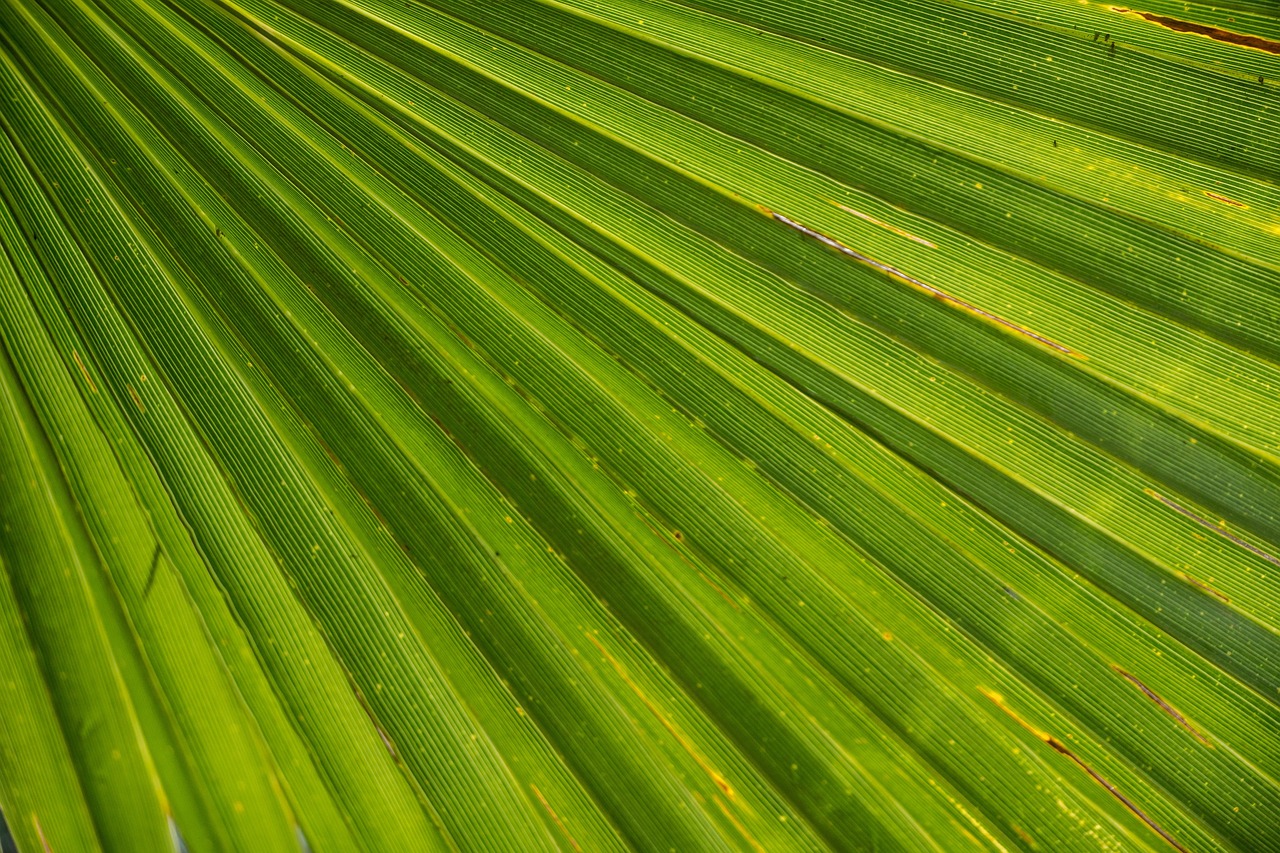Tall palm trees are more than just stunning tropical giants; they symbolize paradise and evoke dreams of sandy beaches and warm sunshine. These majestic plants can reach impressive heights, making them a striking feature in landscapes around the world. Their unique appearance and adaptability make them popular choices for gardens, parks, and commercial properties. In this article, we will explore the fascinating world of tall palm trees, delving into their characteristics, varieties, and the ideal environments for their growth.
Palm trees belong to the family Arecaceae and are primarily found in tropical and subtropical regions. They thrive in warm climates with plenty of sunlight and are known for their slender trunks and fan-like or feathered leaves. The tallest species can reach heights of up to 200 feet or more, making them some of the tallest trees on the planet.

There are various species of palm trees, each with its own distinct characteristics. Some are known for their height, while others may be shorter but boast impressive foliage. Here are a few noteworthy facts about tall palm trees:
| Species | Height | Native Region |
|---|---|---|
| Hyperion Palm (Hyophorbe amaricaulis) | Up to 200 feet | Rodrigues Island, Mauritius |
| Sabal Palm (Sabal palmetto) | Up to 90 feet | Florida, USA |
| Coconut Palm (Cocos nucifera) | Up to 100 feet | Tropical regions worldwide |
| Royal Palm (Roystonea regia) | Up to 100 feet | Cuba, Caribbean |
Tall palm trees have several features that make them stand out. Their smooth, often ringed trunks can create a visually appealing vertical element in a landscape. The leaves, which may be either fan-shaped or feather-like, add texture and color. Additionally, these trees can provide shade and habitat for various wildlife, contributing to biodiversity in their ecosystems.
Types of Tall Palm Trees
When it comes to tall palm trees, there are several species that dominate the landscape. Each type has its charm and specific requirements for growth. Understanding these can help in selecting the right palm for your garden or landscape project.
The following are some popular types of tall palm trees:
- Coconut Palm: Known for its iconic silhouette, the coconut palm is widely cultivated in tropical regions. It provides shade and produces valuable coconuts.
- Royal Palm: This palm is celebrated for its stately appearance. It is often planted in public spaces and along streets for its grandeur.
- Date Palm: With its long fronds and sweet fruits, the date palm is not only attractive but also important for local economies in many regions.
- Sago Palm: Although technically not a true palm, the sago palm is often included in discussions about palms due to its similar appearance and ornamental value.
The selection of palm trees can greatly impact the aesthetics of a landscape. When choosing a type of tall palm tree, consider factors such as climate, space availability, and maintenance requirements. Each variety brings unique beauty and benefits to outdoor spaces.
Tall palm trees also play a significant role in their native habitats. They provide food and shelter to various species of birds and insects. Moreover, their roots help stabilize soil, preventing erosion in coastal areas. In addition to their ecological importance, many cultures view palm trees as symbols of peace and prosperity.
Growing Conditions for Tall Palm Trees
Understanding the ideal growing conditions for tall palm trees is crucial for their successful cultivation. These tropical giants require specific environmental factors to thrive. From sunlight to soil composition, each element plays a vital role in their growth.
Light Requirements
Tall palm trees generally prefer full sun exposure. They thrive in areas where they can receive at least six to eight hours of direct sunlight daily. Insufficient light can hinder their growth, leading to weak trunks and sparse foliage.
Soil Conditions
The soil in which tall palm trees grow should be well-draining. Most species prefer sandy or loamy soils that allow water to flow freely. Excess moisture can lead to root rot, which is detrimental to the health of the tree. It is essential to ensure that the soil has a pH level between 6.0 and 7.5 for optimal growth.
Watering Needs
While tall palm trees are drought-tolerant once established, they require regular watering during their initial growth phase. Overwatering can be just as harmful as underwatering. A consistent watering schedule that allows the soil to dry out slightly between waterings is recommended. During dry spells, palms may need additional water to maintain their health.
Fertilization
To promote healthy growth and vibrant foliage, fertilization is necessary. A balanced fertilizer with equal parts nitrogen, phosphorus, and potassium is ideal. Applying fertilizer every three to four months during the growing season can enhance growth and overall vitality.
Pests and Diseases

Tall palm trees can be susceptible to various pests and diseases. Being aware of these challenges can help in maintaining their health.
Common Pests
Some of the most common pests that affect palm trees include:
- Spider Mites: These tiny pests can cause leaf discoloration and webbing on the fronds.
- Scale Insects: Scale can appear as small bumps on the trunk and leaves, sucking sap from the plant.
- Mealybugs: These pests resemble cottony masses and can weaken the plant by feeding on its juices.
Diseases to Watch For
Tall palm trees are also prone to certain diseases that can affect their health:
- Root Rot: Caused by overwatering or poor drainage, this disease leads to wilting and yellowing of leaves.
- Palm Leaf Skeletonizer: This condition results in skeletonized leaves due to caterpillars feeding on the leaf tissue.
- Ganoderma Butt Rot: A fungal infection that affects the trunk’s base, leading to structural weakness.
Regular inspections and proper maintenance practices can help mitigate these issues. Implementing organic pest control methods or consulting with a horticulture specialist can also assist in managing any infestations or diseases effectively.
Cultural Significance of Palm Trees

Tall palm trees hold significant cultural value in many societies around the world. They are often associated with warmth, relaxation, and tropical vacations. Various cultures incorporate palm trees into their traditions and celebrations.
Symbolism
Palm trees symbolize different meanings across cultures:
- Peace and Victory: In many cultures, palm branches are used as symbols of peace and victory, often seen in religious rituals.
- Tropical Paradise: The image of palm trees evokes thoughts of summer vacations and leisure activities on beautiful beaches.
- Fertility: In some regions, palms are associated with fertility and abundance, representing nourishment and life.
This cultural significance adds an extra layer of appreciation for these magnificent trees, making them more than just plants but integral parts of human history and identity.

Uses of Tall Palm Trees
Tall palm trees are not only visually striking; they also serve a multitude of practical purposes. From providing food and materials to enhancing landscapes, their versatility makes them invaluable in various settings.
Food Production
Many species of palm trees produce edible fruits that are enjoyed worldwide. These fruits not only contribute to local diets but also support economies in tropical regions. Some notable examples include:
- Coconuts: The coconut palm is famous for its versatile fruit used for food, drink, and oil production.
- Dates: Date palms yield sweet, nutritious dates that are a staple in many Middle Eastern cuisines.
- Açaí Berries: The açaí palm produces small, dark berries that are highly regarded for their health benefits and are often used in smoothies and bowls.
These fruits provide essential nutrients and contribute to the culinary traditions of many cultures. Moreover, the cultivation of these palms can boost local economies through agriculture and tourism.
Construction Materials
The trunks and fronds of tall palm trees are also utilized in construction and crafting. The wood of certain palm species is strong and lightweight, making it suitable for various applications:
- Furniture: Palm wood is often used to create stylish and durable furniture pieces.
- Building Materials: In some regions, palm trunks are used as beams or supports in traditional constructions.
- Thatching: Palm fronds are commonly used for thatching roofs, providing natural insulation and aesthetic appeal.
This sustainable use of palm trees illustrates the importance of integrating natural resources into human habitats while minimizing environmental impact.
Aesthetic Value in Landscaping
Tall palm trees are quintessential elements in tropical landscaping. Their unique shapes and sizes add visual interest to gardens, parks, and commercial properties. Here are several ways they enhance outdoor spaces:
Design Features
Palm trees can serve as focal points in landscape design. Their towering presence can create dramatic vertical lines that draw the eye upward. Additionally, the following features enhance their aesthetic appeal:
- Variety of Shapes: Different species have varying trunk shapes and leaf structures that provide diversity in design.
- Color Contrast: The green fronds contrast beautifully with other flowering plants and shrubs, adding depth to a garden.
- Shading: Tall palms provide shade, creating comfortable outdoor environments for relaxation and gatherings.
Environmental Benefits
In addition to their visual appeal, tall palm trees contribute positively to the environment:
- Air Quality Improvement: Like all trees, palms help purify the air by absorbing carbon dioxide and releasing oxygen.
- Biodiversity Support: They offer habitats for various species, from birds to insects, fostering local ecosystems.
- Erosion Control: The root systems of palm trees help stabilize soil, preventing erosion in coastal areas.
The integration of tall palm trees into urban planning can significantly enhance both the beauty and functionality of public spaces. Their presence can transform a mundane area into a vibrant oasis.
Caring for Tall Palm Trees
Caring for tall palm trees requires knowledge and attention to their specific needs. Proper care ensures that these majestic plants flourish in their environment. Key aspects of caring for tall palms include:
Pruning
Regular pruning is essential to maintain the health and appearance of tall palm trees. This process involves removing dead or damaged fronds to promote new growth. It is advisable to follow these guidelines:
- Timing: Prune during the growing season for optimal results.
- Technique: Use sharp, clean tools to avoid damaging the tree.
- Disposal: Properly dispose of cuttings to prevent pest infestations.
Pest Management
Implementing effective pest management strategies is vital for the longevity of palm trees. Regular monitoring for signs of pests or diseases can help mitigate potential issues before they escalate. Organic solutions and integrated pest management techniques are recommended for maintaining healthy palms without harmful chemicals.
Caring for tall palm trees not only enhances their beauty but also contributes to the overall health of the surrounding ecosystem. By understanding their needs and implementing proper care techniques, one can enjoy these magnificent plants for years to come.
Environmental Impact of Tall Palm Trees
Tall palm trees play a crucial role in the environment beyond their aesthetic appeal. Their presence can significantly enhance the ecological balance in their native habitats and surrounding areas.
Carbon Sequestration
Like all trees, tall palm trees contribute to carbon sequestration. They absorb carbon dioxide from the atmosphere, helping to mitigate climate change. The ability of these trees to store carbon makes them essential for creating healthier urban environments. Their role in sequestering carbon is particularly important as cities continue to grow and face challenges related to air quality and greenhouse gas emissions.
Habitat for Wildlife
Tall palm trees provide critical habitats for various wildlife species. Birds, insects, and other animals find refuge in their fronds and trunks. The diverse ecosystems that develop around palm trees support biodiversity, making them integral to the health of local environments. Here are some ways they offer habitat benefits:
- Nesting Sites: Birds often use the fronds for nesting, providing shelter for their young.
- Food Sources: Many species rely on the fruits and flowers of palms for nutrition.
- Microhabitats: The bark and leaves create microhabitats that support various insects and microorganisms.
Integrating Tall Palms into Urban Landscapes
As urban areas expand, integrating tall palm trees into city landscapes has become increasingly popular. Their majestic heights and tropical appearance can transform ordinary streetscapes into vibrant, inviting spaces.
Urban Design Considerations
When incorporating tall palm trees into urban designs, several factors should be considered:
- Space Availability: Ensure there is enough space for the tree’s roots and canopy to grow without obstruction.
- Climate Compatibility: Choose species that are well-suited to the local climate to ensure successful growth.
- Maintenance Requirements: Plan for regular maintenance, including pruning and pest management, to keep the trees healthy.
By carefully selecting and placing tall palm trees within urban settings, communities can enjoy the numerous benefits they offer, from aesthetic beauty to environmental advantages.
Final Thoughts
Tall palm trees are truly remarkable giants that enhance our landscapes, provide vital resources, and support diverse ecosystems. Their cultural significance adds depth to their value, reminding us of the connection between nature and human experience. From their stunning visual appeal to their practical uses in food production and construction, these tropical wonders are integral to both urban and rural environments.
As we continue to explore ways to create sustainable and beautiful spaces, recognizing the importance of tall palm trees is essential. By understanding their needs and benefits, we can foster environments that celebrate these magnificent plants while ensuring their health for future generations. Whether you are a landscape designer, a gardener, or simply an admirer of nature, embracing the beauty and utility of tall palm trees can enhance our lives and the world around us.
